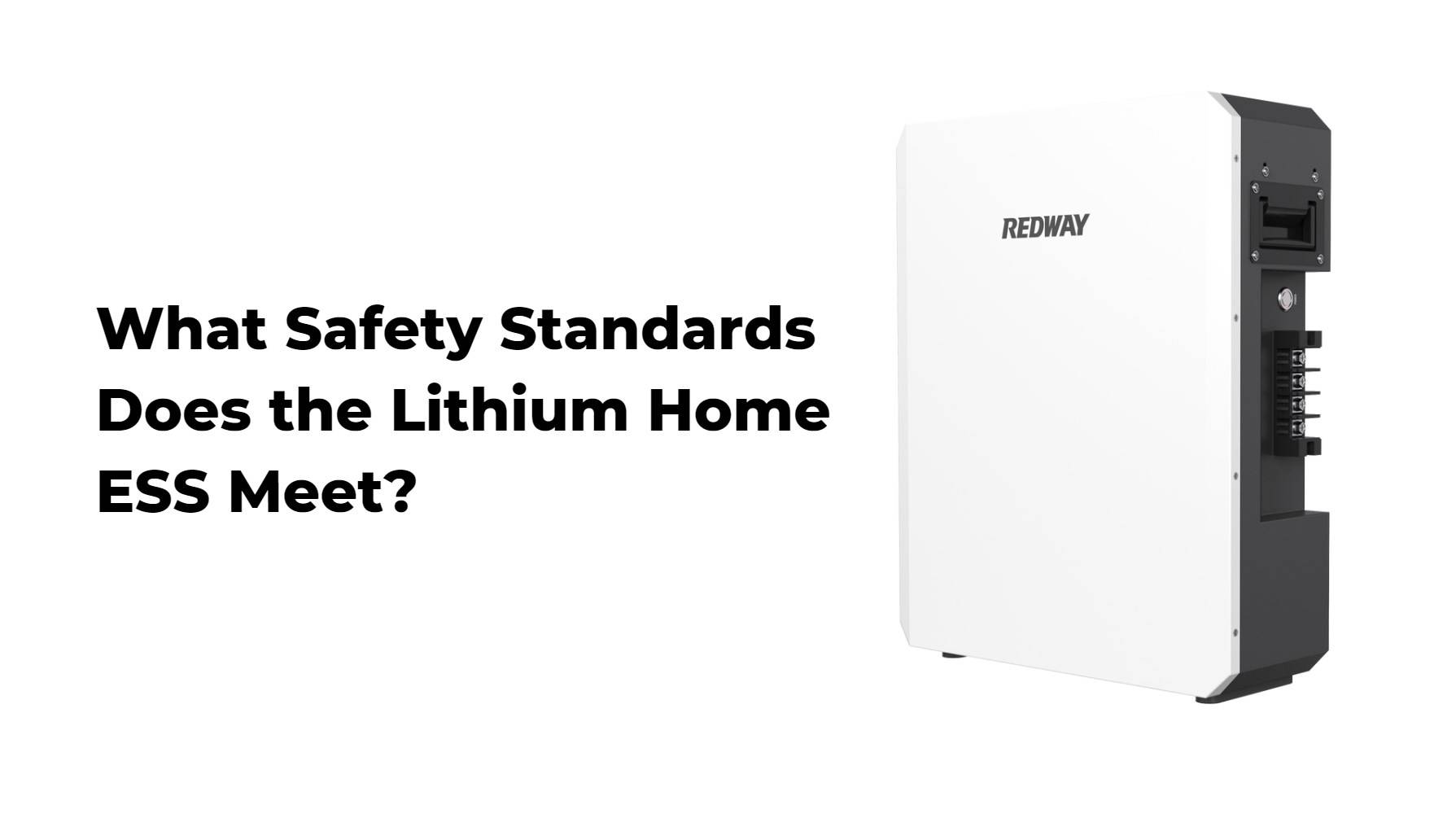Lithium Home Energy Storage Systems (ESS) typically meet safety standards such as IEC62619, UN38.3, and CE certifications. These standards ensure that the systems are safe for residential use, minimizing risks associated with thermal runaway and electrical hazards.
As homeowners increasingly turn to renewable energy solutions, lithium home energy storage systems (ESS) have become a pivotal component in sustainable living. Ensuring these systems are safe and reliable is paramount. Below, we delve into the safety standards that lithium home ESS must meet to guarantee they are secure and effective for residential use.
Understanding Key Safety Standards for Lithium Home ESS
UL 9540: Standard for Energy Storage Systems and Equipment
UL 9540 is a critical certification for energy storage systems, including lithium home ESS. This standard assesses the overall safety of the entire energy storage system. It covers aspects such as:
- Electrical Safety: Ensures that the system can handle electrical loads and surges without failure.
- Fire Safety: Tests the system’s ability to withstand and mitigate fire risks.
- Mechanical Integrity: Evaluates the physical robustness of the system under various conditions.
- Environmental Impact: Considers the system’s resistance to environmental factors like temperature, humidity, and dust.
UL 1741: Standard for Inverters, Converters, Controllers, and Interconnection System Equipment
UL 1741 focuses on the components that interconnect energy systems with the grid, particularly inverters. For lithium home ESS, compliance with UL 1741 ensures that:
- Grid Compatibility: The system can safely interface with the utility grid.
- Operational Safety: Inverters and other components operate safely under normal and fault conditions.
- Efficiency Standards: The system meets energy efficiency requirements, reducing losses and improving performance.
Building Codes and Installation Standards
International Residential Code (IRC)
The IRC provides comprehensive guidelines for the safe installation of energy systems in residential buildings. For lithium home ESS, adherence to IRC involves:
- Location Requirements: Specifies where ESS can be installed within or outside the home to minimize hazards.
- Structural Considerations: Ensures that the installation does not compromise the structural integrity of the home.
- Electrical Installations: Outlines proper wiring and electrical connections to prevent overloading and short circuits.
NFPA 855: Standard for the Installation of Stationary Energy Storage Systems
The NFPA 855 is essential for the safe deployment of stationary energy storage systems, including lithium home ESS. Key provisions include:
- Fire Safety Protocols: Mandates measures to prevent, detect, and suppress fires.
- Separation Requirements: Defines safe distances between ESS and living spaces or other structures.
- Ventilation and Thermal Management: Ensures adequate ventilation and thermal controls to prevent overheating.
Critical Components for Enhanced Safety
Battery Management Systems (BMS)
A robust Battery Management System (BMS) is crucial for the safe operation of lithium home ESS. The BMS performs several vital functions:
- Monitoring: Continuously tracks battery status, including voltage, current, and temperature.
- Balancing: Ensures equal charging and discharging across all cells to prevent imbalances.
- Protection: Provides automatic shutdowns or disconnects in case of anomalies like overcharging, deep discharging, or overheating.
Fire Suppression Systems
Advanced fire suppression systems are integral to modern lithium home ESS. These systems can include:
- Automatic Extinguishers: Designed to activate in response to detected smoke or heat.
- Thermal Barriers: Materials that can withstand high temperatures to prevent fire spread.
- Gas Suppression: Inert gases that can suppress fires without damaging the ESS components.
Overcurrent Protection Devices
Overcurrent protection devices, such as fuses and circuit breakers, are essential for preventing electrical overloads. These devices:
- Detect Excess Current: Automatically trip to cut off power if the current exceeds safe levels.
- Prevent Damage: Protect the ESS and connected devices from potential damage due to electrical faults.
Installation Best Practices for Lithium Home ESS
Site Assessment
Before installation, a thorough site assessment is necessary to identify the optimal location and configuration for the ESS. This assessment should consider:
- Proximity to Load Centers: Placing the ESS close to the main power consumers to reduce energy loss.
- Accessibility: Ensuring easy access for maintenance and emergency services.
- Environmental Conditions: Evaluating the site for temperature extremes, humidity, and exposure to elements.
Professional Installation
Engaging certified professionals for the installation of lithium home ESS is crucial. Certified installers will:
- Follow Codes and Standards: Adhere to all relevant building codes and safety standards.
- Ensure Proper Wiring: Use appropriate wiring techniques to prevent electrical hazards.
- Test the System: Conduct thorough testing to verify the system’s performance and safety before commissioning.
Maintenance and Monitoring
Regular Inspections
Routine inspections are vital to ensure the continued safety and performance of lithium home ESS. These inspections should include:
- Visual Checks: Looking for signs of wear, corrosion, or damage to components.
- Performance Testing: Verifying that the ESS is operating within specified parameters.
- Firmware Updates: Keeping the BMS and other control systems updated with the latest software.
Remote Monitoring
Remote monitoring capabilities allow homeowners and service providers to keep an eye on the ESS in real-time. Benefits of remote monitoring include:
- Early Detection of Issues: Identifying and addressing potential problems before they escalate.
- Optimized Performance: Adjusting operational parameters for maximum efficiency and safety.
- Historical Data Analysis: Using data logs to predict maintenance needs and improve system reliability.
Conclusion
Ensuring the safety and reliability of lithium home energy storage systems requires strict adherence to recognized standards such as UL 9540 and UL 1741, as well as compliance with building codes like the IRC and NFPA 855. By integrating robust safety components, following best practices for installation, and committing to regular maintenance and monitoring, homeowners can confidently deploy lithium ESS to enhance their energy resilience while maintaining the highest safety standards.



